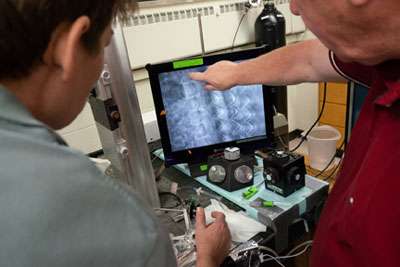Much of the work that won him the Kavli Prize took place in a corner lab on the street level of the aging Medical Sciences Center, at the intersection of Charter Street and Linden Drive. Fettiplace, an Englishman who can trace his heritage to the Norman conquest in 1066, earned his doctoral degree at Cambridge University. He began his career at Stanford University, studying photoreceptors in the retinae of turtles.
On returning to Cambridge University, he switched to studying hearing, using turtles because they were technically easier than mammals, and it was in the turtle cochlea he made his early discoveries. He was already a fellow of the Royal Society of London when he arrived on campus in 1990, to become Steenbock Professor of Neural and Behavioral Sciences.
He says he was excited to join a department filled with renowned auditory researchers, such as John Brugge, Joe Hind, Bill Rhode, Tom Yin, Dan Geisler, and Donata Oertel in what was then the Department of Neurophysiology.
Most of his neuroscience career has focused on the workings of the ear, describing hair cells in the cochlea that translate the vibrations of sound into electrical signals that are the currency of the brain. One of his most important early discoveries was that auditory hair cells are designed electrically to pick up a specific range of frequencies and arranged along the cochlea like the keys of a piano, with high frequencies at one end and low at the other.
“Just as a prism separates white light into the colors, the cochlea behaves like an acoustic prism; it takes wide bands of noise and the hair cells separate the sound by frequency,” he explains.
The hair cells detect motion of the membranes inside the cochlea and convert them to electrical signals. But the movements that stimulate cochlear hair cells are very small, a thousandth the diameter of the hair on a human head. So Fettiplace had to invent new methods and techniques to record what the cells were doing, and he did so, in part, because no one else had.
“People think scientists develop hypotheses and design experiments to prove them. That isn’t how science works,” he says. “You try to get a new measurement and if you’re lucky, you stumble onto something. That’s how we discovered electrical tuning, we just wanted to be the first to make a recording from the hair cells.”
His colleague Oertel, the chair of neurosciences and a fellow hearing researcher, calls Fettiplace “tremendously creative and a genius at designing new techniques.”


